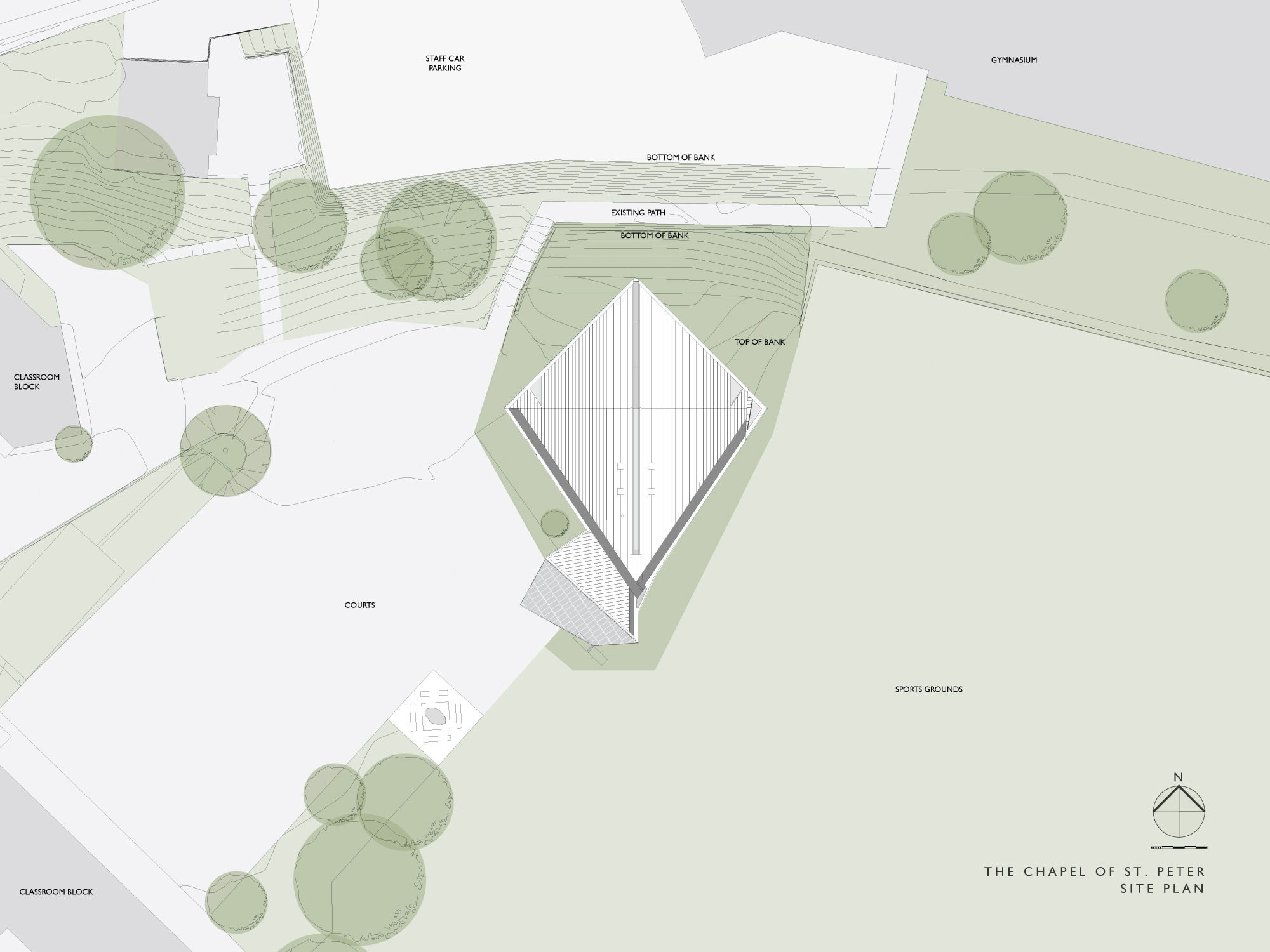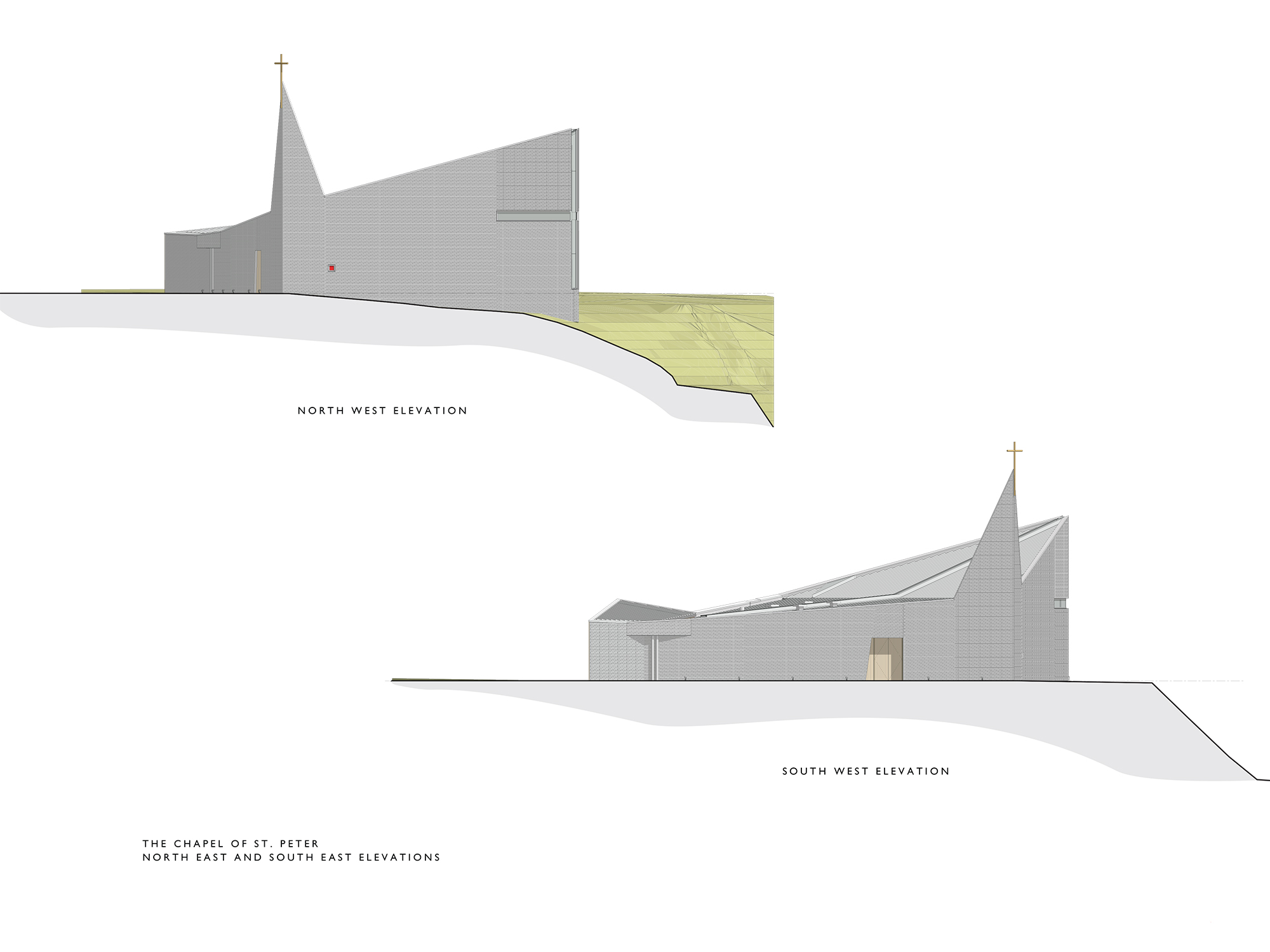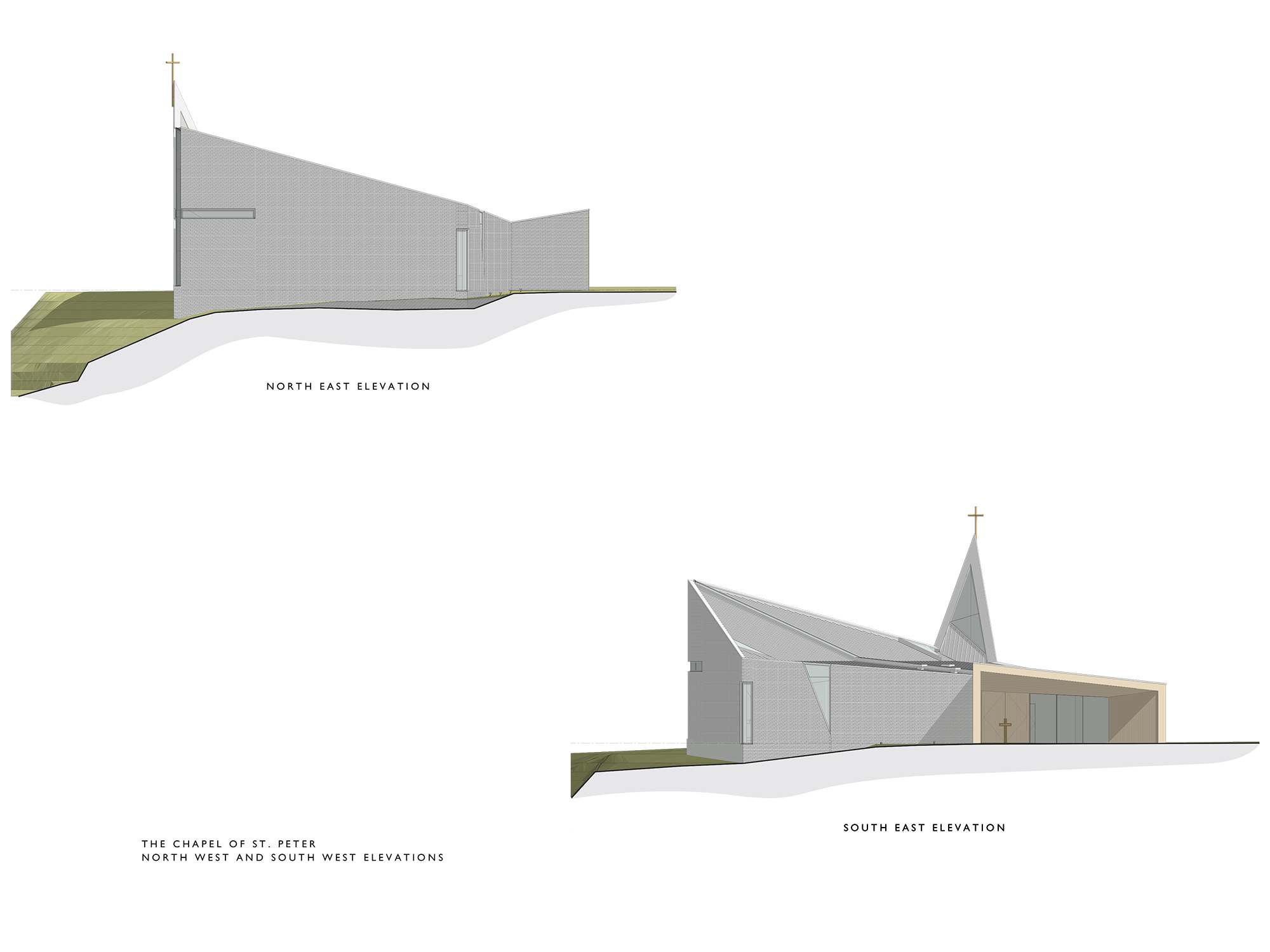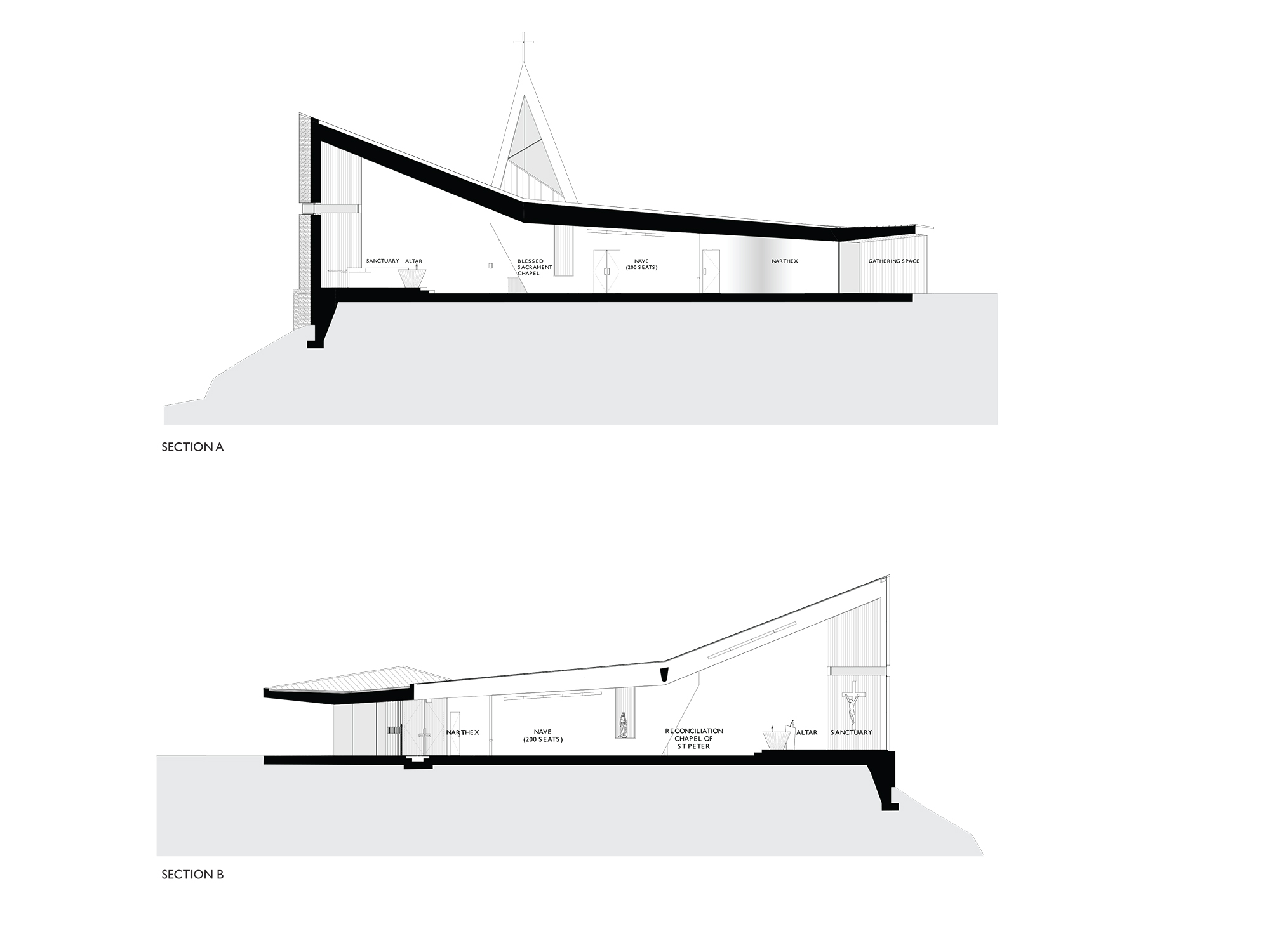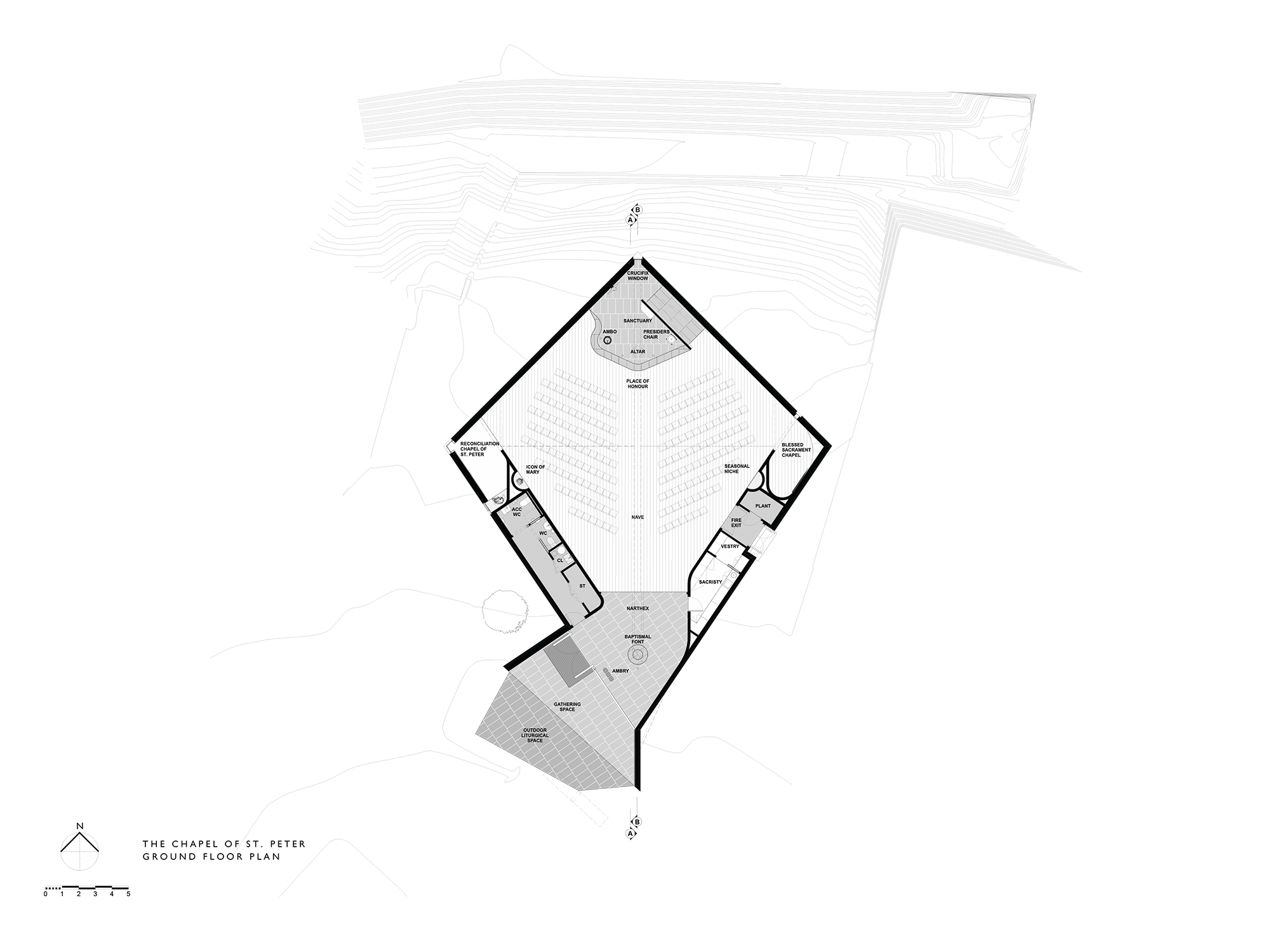The most potent and recognised symbol of Christianity is the cross. A symbol of atonement, it provides hope and inspiration to the faithful. The Chapel of St. Peter presents a confident and identifiable cross to its most public face signifying the buildings purpose, while providing a public message of God’s love and our salvation.
The vertical element of the cross is extended into and across the roof to present itself as an inverted cross taking on a highly personalised meaning to St Peter’s College. This gesture only becomes apparent from within the chapel and as such forms a strong connection to Saint Peter, giving the interior experience an elevated depth of meaning and theological reading.
The spatial energy of the interior form is directed toward the Altar and the Cross beyond; in effect towards the light.
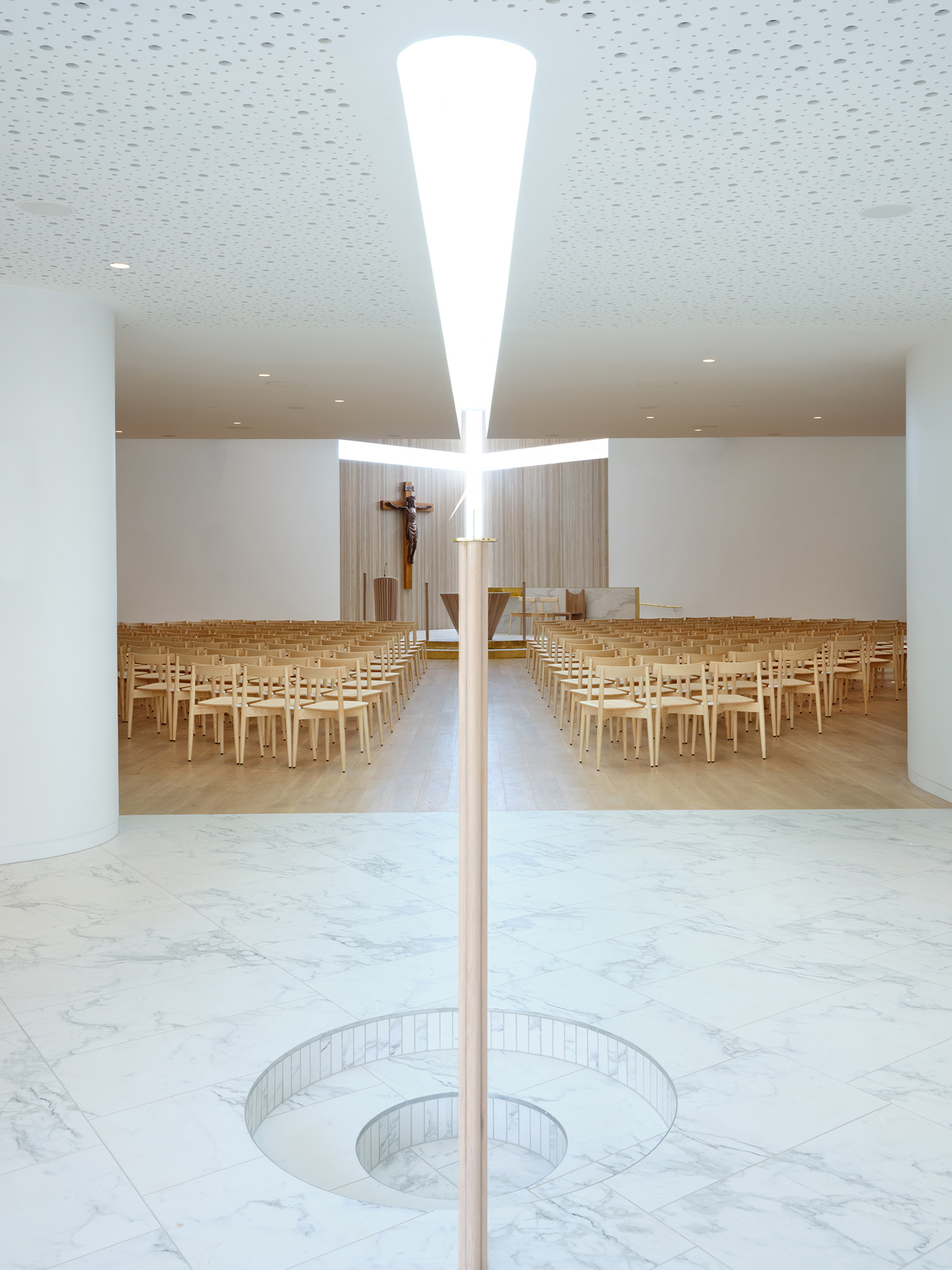
The entry into The Chapel is to one side of the diamond, or fish shaped plan. Inside, the congregation is turned onto a main axis towards the Altar.
The Baptismal Font, the central focus of the Narthex, has a powerful axial link to the Altar down the centre line of the Assembly. The Altar and Font are further linked through the skylight and dynamically reinforces the sacramental journey begun in baptism and culminated in Eucharist. To the right of the main space is the Blessed Sacrament Chapel containing the Tabernacle, coloured gold and bathed in light from the spire above. To the left is he Reconciliation Chapel of St Peter. Located in the corners of the diamond shaped plan as private niches open to the main Chapel, these spaces are signified by triangular skylights located above each entry point.
In the evening the spire emits light from the Blessed Sacrament Chapel, and the cross glows, beacon-like within the mitre-like form.
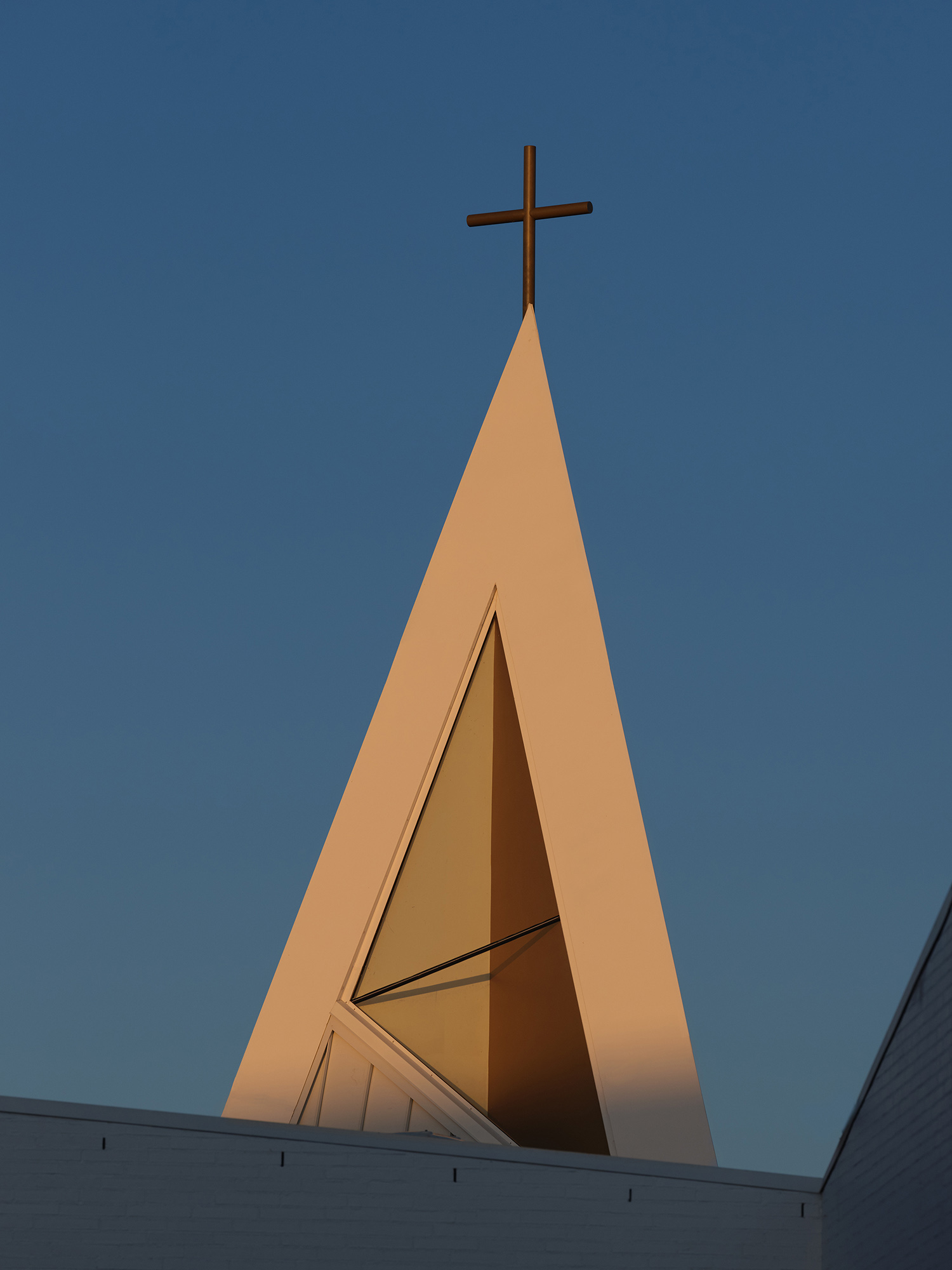
From within the College grounds the building presents another face, one of humility and purpose. Low, long and inviting, the Gathering space connects with the assembly courtyard; The Chapel providing the backdrop for morning assembly overlooked by the figure of Saint Peter. It is a building that purposefully identifies itself as being different from the surrounding buildings. It is special. This is sacred architecture.
The architecture is one of noble simplicity, forward looking, but deeply respecting Catholic traditions. It has emerged from a thorough engagement with liturgical principles and designed to serve the celebration of liturgy and active participation of the faithful.
